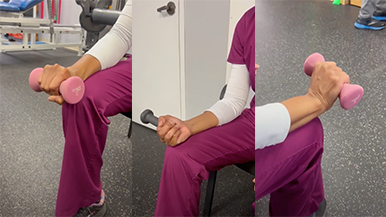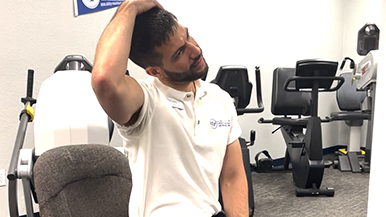Overcoming Chronic Pelvic Pain Syndrome in Men

CPPS is a condition in men that antibiotics are not helping. Its adverse impact on quality of life has been compared to other conditions such as Crohn’s disease, diabetes, and angina. Physical therapy and holistic care have proven invaluable for patients to cope with CPPS.
What Is Chronic Pelvic Pain Syndrome?
Chronic pelvic pain syndrome impacts between 5-10% of adult men and accounts for around 8% of visits to the urologist office. Up to half of all men report being affected by its symptoms at some point in their life. CPPS is the most common urologic condition witnessed in men under 50 years of age.
CPPS can originate from the prostate, in the testicles, or from the epididymis. It can also start from the intestines, the musculoskeletal system in the hips, groin or pelvic floor, or the neurological system. Moreover, lifestyle plays a significant role in CPPS. Stress levels, types of exercise, lack of exercise, and nutrition can all impact the nature and severity of CPPS. Physical activities that put a lot of pressure on their pelvis can aggravate the manifestation of the condition. Nutrition can help reduce swelling in the body, assuage the bladder, as well as help decrease different hormone levels in the body.
Symptoms of CPPS
Male chronic pelvic pain syndrome is characterized by persistent pain or pressure in the pelvic region or genitalia of males that lasts for more than three months not caused by explainable natural causes such as infection or structural irregularities. An infection or inflammation do not cause chronic prostatitis or CPPS, and pain is not limited to the prostate. In fact, it may be caused by muscle guarding or tightness in the pelvic floor, abdominal or back muscles.
Symptoms of CPPS can linger for up to an average of 90 months before diagnosis and include:
- Pain in the lower abdomen, perineum, rectum, or lower back
- Low mood and anxiety
- Pain at the tip of the penis and the testicles
- Discomfort or burning during ejaculation
- Sexual dysfunction
- Urinary difficulties
- Bowel problems
Other symptoms you may experience include reduced urine stream, returning to the toilet within a couple of hours, or feeling like you are not fully emptying your bladder.
How to Manage CPPS
Patients can manage and even prevent symptoms using an array of treatment modalities.
To effectively manage the symptoms at all levels, it is often essential to employ a multi-professional and multi-modal approach. Pelvic Physical Therapists have been specially trained in the musculoskeletal system of the pelvis, pelvic floor, abdominal and back muscles and may be able to provide relief. Physical therapy has been shown to provide relief of CPPS symptoms particularly when treatment with antibiotics and antimicrobial drugs has not been successful.
Is chronic prostatitis or CPPS affecting your quality of life? With a delay of diagnosis, you may be feeling depressed, anxiety, or withdrawing from social activities. Do you have urinary hesitancy, urgency or frequency? Have you been diagnosed with prostatitis, and given antibiotics but achieved little to no relief?
We offer treatment in four locations (Winter Park, Orlando, Waterford Lakes, and Sanford). For more information on how we may be able to help you overcome the effects of CPPS, please feel free to contact us. We’ll be happy to answer any of your questions or address any of your concerns.



